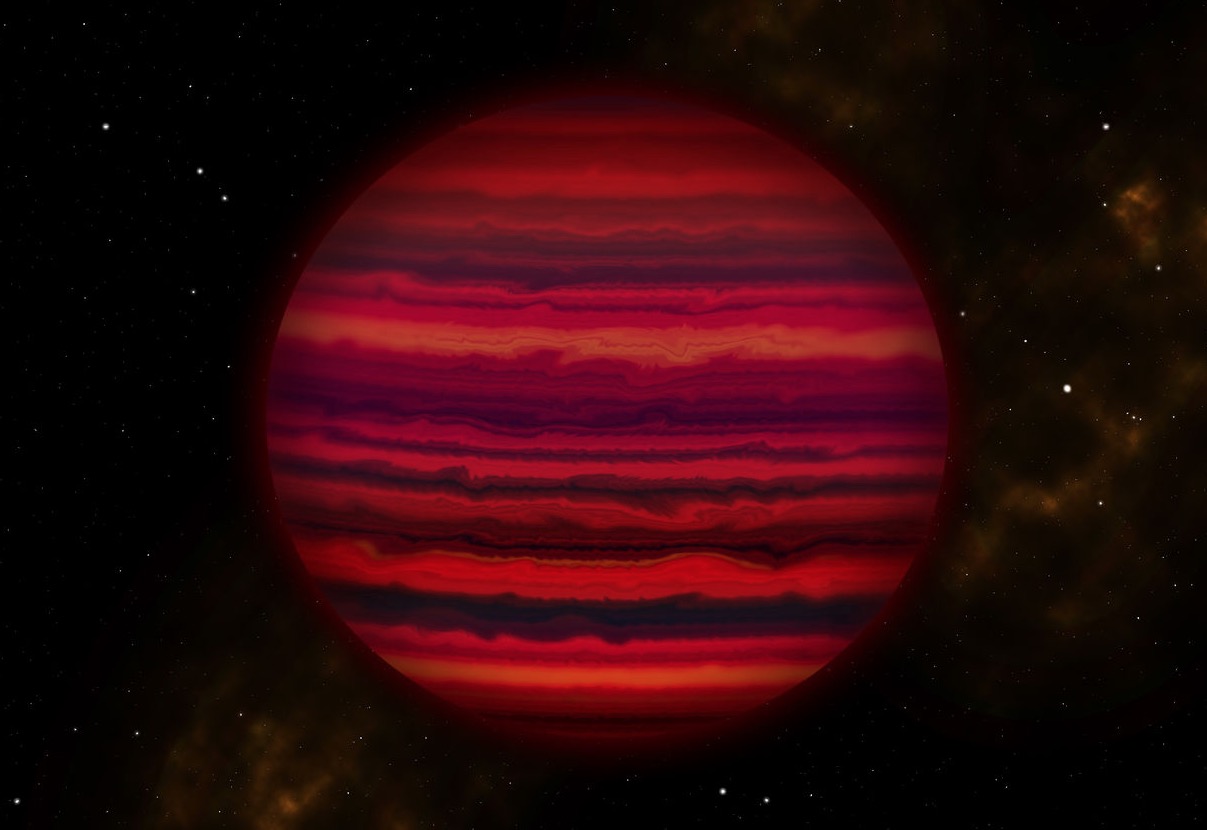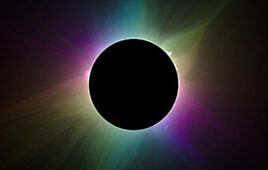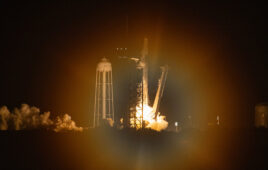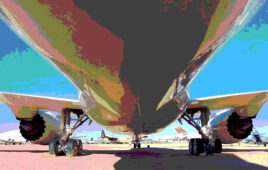
Artist’s rendering of WISE 0855 as it might appear if viewed up close in infrared light. (Credit: Joy Pollard, Gemini Observatory/AURA)
An infrared spectrum of WISE 0855—a failed star known as a brown dwarf located 7.2 light years away from Earth—has provided astronomers with an illustration of the celestial body’s composition and chemistry.
A team led by astronomers from the University of California, Santa Cruz used the Gemini North Telescope in Hawaii to obtain this image, which gave strong evidence of water clouds surrounding the star, according to the university’s press release.
Two years ago, observations of WISE 0855 using limited photometric data had indicated the presence of water clouds, but this method couldn’t provide a complete picture since the star is too faint to be observed through conventional spectroscopy techniques or even infrared wavelengths.
The team was able to use Gemini North telescope as well as the Gemini Near Infrared Spectrograph to observe the star for 14 hours each day for a 13-night period where they were able to gain the first spectrum measurements of the star, noted The Verge.
“We would expect an object that cold to have water clouds, and this is the best evidence that it does,” said Andrew Skemer, assistant professor of astronomy and astrophysics at UC Santa Cruz and first author of a paper on the new findings, in a statement.
Next, the team used atmospheric models to compare the brown dwarf with Jupiter because both planets share similar features. WISE 0855 has five times the mass of Jupiter, but its temperature sits at about 250 degrees Kelvin whereas Jupiter is 130 degrees Kelvin.
Ultimately, the results of this research verified the planet’s temperature along with the presence of water vapor, reported Space.com.
The primary difference is that Jupiter has higher traces of phosphine, which is an element that forms in the planet’s warm interior. It forms reactions with other compounds in Jupiter’s cooler atmosphere causing more turbulent weather conditions.
The study will be published in the journal The Astrophysical Journal Letters.




